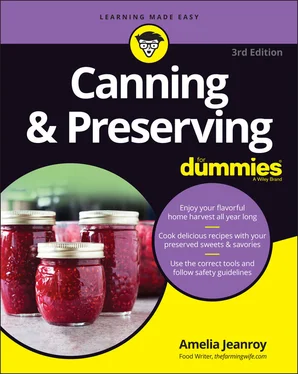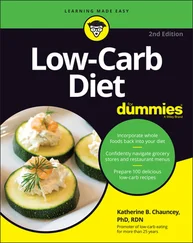Aspirin: Don’t laugh at this, but at one time, aspirin was used as a substitute for heat processing. It does contain a germicidal agent that acts as a preservative, but this agent doesn’t destroy the enzyme that causes deterioration in food and food spoilage.
Wax or paraffin seal: Using wax or paraffin was once thought of as a safe way to seal canned goods. It has been proven to be unreliable, and dangerous botulism spores can still develop.
Freezing foods is the art of preparing and packaging foods at their peak of freshness and plopping them into the freezer to preserve all that seasonal goodness. Freezing is a great way to preserve foods that can’t withstand the high temperatures and long cooking times of conventional canning methods.
The keys to freezing food are to make sure it’s absolutely fresh, that you freeze it as quickly as possible, and that you keep it at a proper frozen temperature (0 degrees).
 The quality won’t get better just because you throw it in the freezer. Properly packaging food in freezer paper or freezer containers prevents any deterioration in its quality. Damage occurs when your food comes in contact with the dry air of a freezer. Although freezer-damaged food won’t hurt you, this does make the food taste bad. Here are three things to help you avoid freezer burn.
The quality won’t get better just because you throw it in the freezer. Properly packaging food in freezer paper or freezer containers prevents any deterioration in its quality. Damage occurs when your food comes in contact with the dry air of a freezer. Although freezer-damaged food won’t hurt you, this does make the food taste bad. Here are three things to help you avoid freezer burn.
Reduce exposure to air: Wrap food tightly.
Avoid fluctuating temperatures. Keep the freezer closed as much as possible. Know what you want to remove before opening the door.
Don’t overfill your freezer. An overly full freezer reduces air circulation and speeds up freezer damage.
For information and instructions on freezing a variety of foods, go to Part 4.
Dehydrating is the oldest method known for preserving food. When you dehydrate or dry food, you expose the food to a temperature that’s high enough to remove the moisture but low enough that it doesn’t cook. Good air circulation assists in evenly drying the food.
An electric dehydrator is the best and most efficient unit for drying, or dehydrating, food. Today’s units include a thermostat and fan to help regulate temperatures much better. You can also dry food in your oven or by using the heat of the sun, but the process will take longer and produce inferior results to food that is dried in a dehydrator. Go to Part 5for dehydrating instructions for fruits, vegetables, and herbs.
Holding the Keys to Canning and Preserving Success
Canning and preserving methods are simple and safe, and they produce food that’s nutritious, delicious, and just plain satisfying to your taste buds. Becoming a successful food preserver takes time, effort, and knowledge of the rules. Follow these tips for achieving success as a home canner and preserver:
Start with the freshest, best products available. Preserving doesn’t improve food quality. If you put garbage in, you get garbage out.
Know the rules and techniques for your canning or preserving method before you start your work. Don’t try to learn a technique after you’ve started your processing.
Work in short sessions to prevent fatigue and potential mistakes. Process no more than two items in one day, and work with only one canning method at a time.
Stay up to date on new or revised guidelines for your preserving method. This book is a great start. You can also go to websites like www.freshpreserving.com , created by the makers of Ball canning supplies. Here you can find tips and directions for canning just about anything.
Use the correct processing method and processing time to destroy microorganisms. The recipe will tell you what method to use, but it helps if you understand the difference between high- and low-acid foods and how the canning methods for each differ. Go to Chapter 3for details.
Know the elevation you’re working at. Adjust your processing time or pressure when you’re at an altitude over 1,000 feet above sea level. For accurate information on how to adjust for your altitude, refer to Chapter 4for water-bath canning conversions and Chapter 9for pressure canning conversions.
Put together a plan before you start your preserving session. Read your recipe (more than once). Have the proper equipment and correct ingredients on hand to prevent last-minute shortages and inconvenient breaks (make a list of what you need and check off items as you gather them).
Test your equipment. If you’re using a pressure canner or an electric dehydrator, test out the equipment to ensure everything’s working properly. And always check the seals on your jars.
Do a trial run. Before canning for the first time (or the fortieth), it’s a good idea to do a trial run. Canning jars of water is a great way to be certain that you have all the equipment you will need, and that you are using the techniques properly. Do your jars seal? It is also a good way to experience the sounds that both a water-bath and pressure canner make.
Use recipes from reliable sources or ones that you’ve made successfully before. Follow your recipe to the letter. Don’t substitute ingredients, adjust quantities, or make up your own food combinations. Improvisation and safe food preservation aren’t compatible. It is important to know that when canning, you can’t double your recipe. If you require more than what the recipe yields, make another batch. Always use the size jars that are recommended in the recipe as well. Trying to use a larger or smaller jar may throw off the yield and final result.
Now you’re ready to take your food to its final destination in the preservation process. Whether you choose canning, freezing, or dehydrating, proceed down your canning and preserving road with confidence.
Chapter 2
Gathering Your Canning and Preserving Gear
IN THIS CHAPTER
 Checking out your everyday kitchen utensils and equipment
Checking out your everyday kitchen utensils and equipment
 Exploring and using canning and preserving gear
Exploring and using canning and preserving gear
 Viewing your options for packaging food for your freezer
Viewing your options for packaging food for your freezer
 Tracking down gear for drying
Tracking down gear for drying
How many times have you heard the phrase, “Use the right tool for the job”? At no time is this truer than when you’re canning and preserving. Most of the items discussed in this chapter won’t break the bank, but they will make your canning and preserving tasks more efficient. The faster you process your fresh ingredients, the better the quality and flavor of your final product.
In this chapter, you find a list of the tools and utensils you need to complete your tasks. Some tools, like a jar lifter or a lid wand, are only used for canning. Other tools, like pots, pans, and knives, are used throughout the year for everyday tasks. Purchase good-quality tools and equipment; their quality and durability will pay for themselves many times over.
Keeping Basic Kitchen Tools at the Ready
The tools that make canning and preserving easier are often the very same tools that are in most well-stocked kitchens. When a recipe recommends a tool for canning, there’s a practical reason for doing so. Using the proper tool for the job decreases the chance of a jar failing to seal or being able to harbor bacteria. It can also reduce the chance of mishaps and injuries.
Читать дальше

 The quality won’t get better just because you throw it in the freezer. Properly packaging food in freezer paper or freezer containers prevents any deterioration in its quality. Damage occurs when your food comes in contact with the dry air of a freezer. Although freezer-damaged food won’t hurt you, this does make the food taste bad. Here are three things to help you avoid freezer burn.
The quality won’t get better just because you throw it in the freezer. Properly packaging food in freezer paper or freezer containers prevents any deterioration in its quality. Damage occurs when your food comes in contact with the dry air of a freezer. Although freezer-damaged food won’t hurt you, this does make the food taste bad. Here are three things to help you avoid freezer burn. Checking out your everyday kitchen utensils and equipment
Checking out your everyday kitchen utensils and equipment










